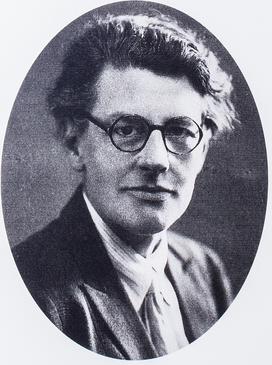Related Research Articles

Ophthalmology is a clinical and surgical specialty within medicine that deals with the diagnosis and treatment of eye disorders. A former term is oculism.

Sir Jonathan Hutchinson, was an English surgeon, ophthalmologist, dermatologist, venereologist, and pathologist, who notably advocated for circumcision.

Western Eye Hospital is an ophthalmology hospital in west London. It is managed by the Imperial College Healthcare NHS Trust.
Brigadier The Honourable Geoffrey John Orlando Bridgeman MC, styled The Honourable from 1929, was a British soldier and ophthalmologist.

Douglas Moray Cooper Lamb Argyll Robertson FRSE, FRCSEd LLD was a Scottish ophthalmologist and surgeon. He introduced physostigmine into ophthalmic practice and the Argyll Robertson pupil is named after him. He was president of the Royal College of Surgeons of Edinburgh.

Arthur Jacob (1790–1874) was an Irish ophthalmologist. He is known for founding several hospitals, a medical school, and a medical journal. He contributed to science and academia through his 41-year term as Professor of Anatomy at the Royal College of Surgeons in Ireland (RCSI) and as the first Irish ocular pathologist. He was elected President of RCSI in 1837 and 1864.

Robert Marcus Gunn was a Scottish ophthalmologist remembered for Gunn's sign and the Marcus Gunn pupil.

The Royal Victoria Eye and Ear Hospital is a public teaching hospital in Dublin, Ireland. The Royal Victoria Eye and Ear Hospital in Dublin was founded in 1895 and is the National Referral Centre for both Eye and Ear, Nose & Throat disorders.

The Adelaide Hospital was a general and teaching hospital in Peter Street, Dublin, Ireland. It was absorbed into the Tallaght Hospital in June 1998.

Jervis Street Hospital was a hospital in Jervis Street in Dublin, Ireland. The site of the hospital became the Jervis Shopping Centre.

Sir Charles Alexander Cameron, CB was an Irish physician, chemist and writer prominent in the adoption of medical hygiene. For over fifty years he had charge of the Public Health Department of Dublin Corporation. He was elected President of the Royal College of Surgeons in Ireland (RCSI) in 1885.
The Hunterian Oration is a lecture of the Royal College of Surgeons of England, named in honour of pioneering surgeon John Hunter and held on his birthday, 14 February, each year.

James Little was an Irish medical practitioner. After spending an early part of his career as a ship's surgeon, surviving a shipwreck, he became chief physician at the Adelaide Hospital in Dublin and Regius Professor of Physic at Trinity College Dublin.
Captain Dr Henry Speldewinde de Boer, CMG, MC (1889–1957) was a Ceylonese-born British colonial doctor. He was the former Director of Medical Services in Uganda and Nyasaland as well as being elected as County Councillor for the Hemel Hempstead division of Hertfordshire.

Walter Whitehead, FRCSE, FRSE, was a surgeon at various hospitals in Manchester, England, and held the chair of Clinical Surgery at the Victoria University of Manchester. He was president of the British Medical Association in 1902. He once claimed that knowledge of anatomy was an impediment to being a good surgeon but was himself a bold, innovative practitioner of international repute. His procedure for excision of the tongue using scissors and his formulation of a related ointment became a standard treatment, as did a procedure he developed for the treatment of haemorrhoids.

Euphan Maxwell (1887–1964) was an Irish ophthalmologist and the first woman ophthalmic surgeon in Ireland at the Royal Victoria Eye and Ear Hospital, Dublin.

Sir Peter Freyer was an Irish surgeon with an expertise in genitourinary surgery, best known at first as an Indian Medical Service (IMS) officer, for making popular the procedure for crushing bladder stones to allow them to be evacuated through the natural passages, a procedure known as a litholapaxy. Following retirement from the IMS after 20 years of service in India, he returned to England and popularized a procedure for benign large prostates. This was known as the suprapubic prostatectomy, a transvesical prostatectomy or the Freyer operation, where the prostate is removed through an abdominal incision above the pubic bone but below the umbilicus and through the bladder, and it included using suprapubic drainage post-operatively.

John Fletcher Little was an Irish physician and Liberal Party politician.
Lieutenant-Colonel Herbert Herbert, FRCS was a British ophthalmologist and officer in the Indian Medical Service (IMS), known for his work on trachoma, cataract and glaucoma. Later, he was vice-president of the Ophthalmological Society of the UK.
George Archibald Maconachie was a British surgeon who worked in the Indian Medical Service, later serving as professor of ophthalmology at the Grant Medical College, Bombay and at Aberdeen University. He was one of the founders of the Bombay Natural History Society.